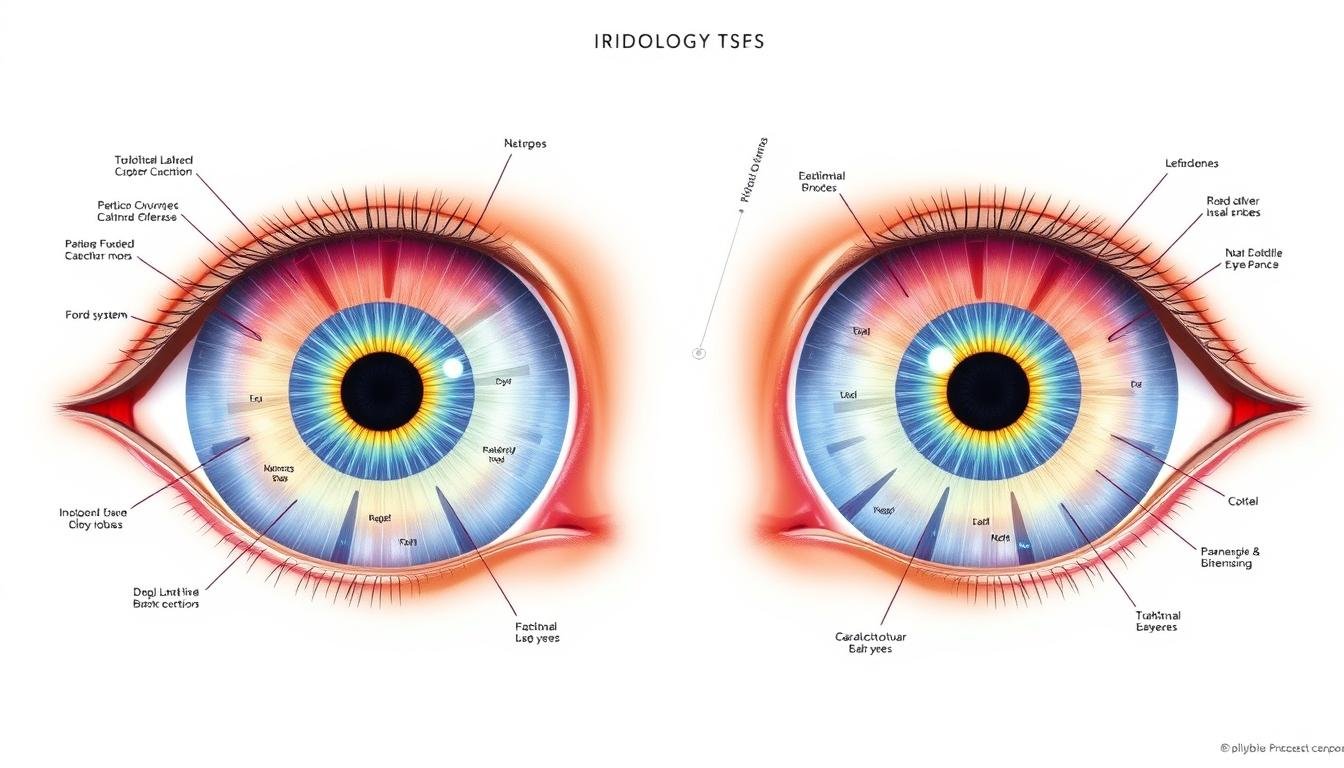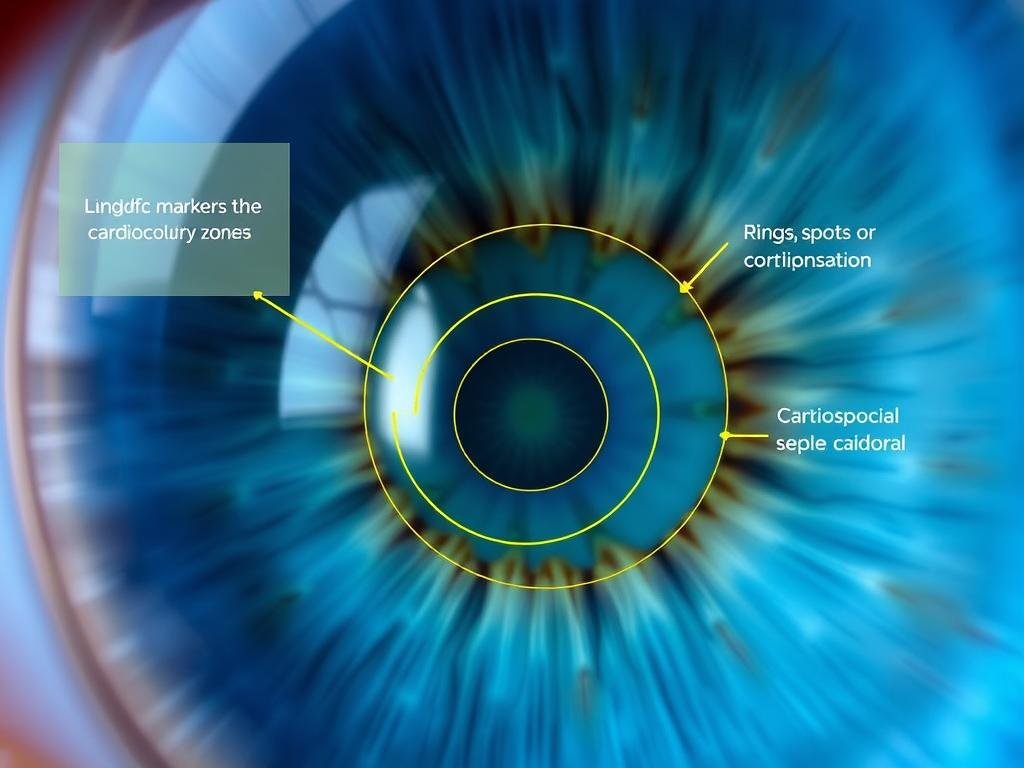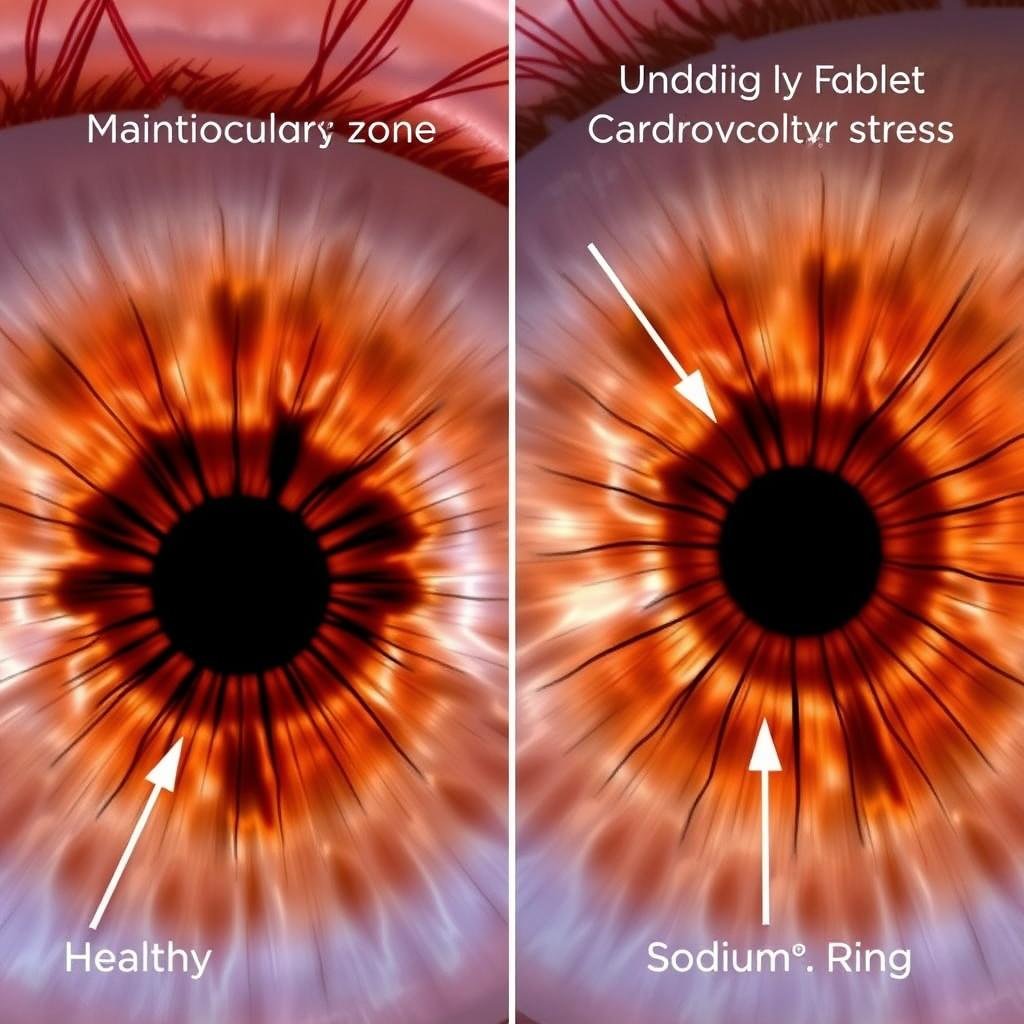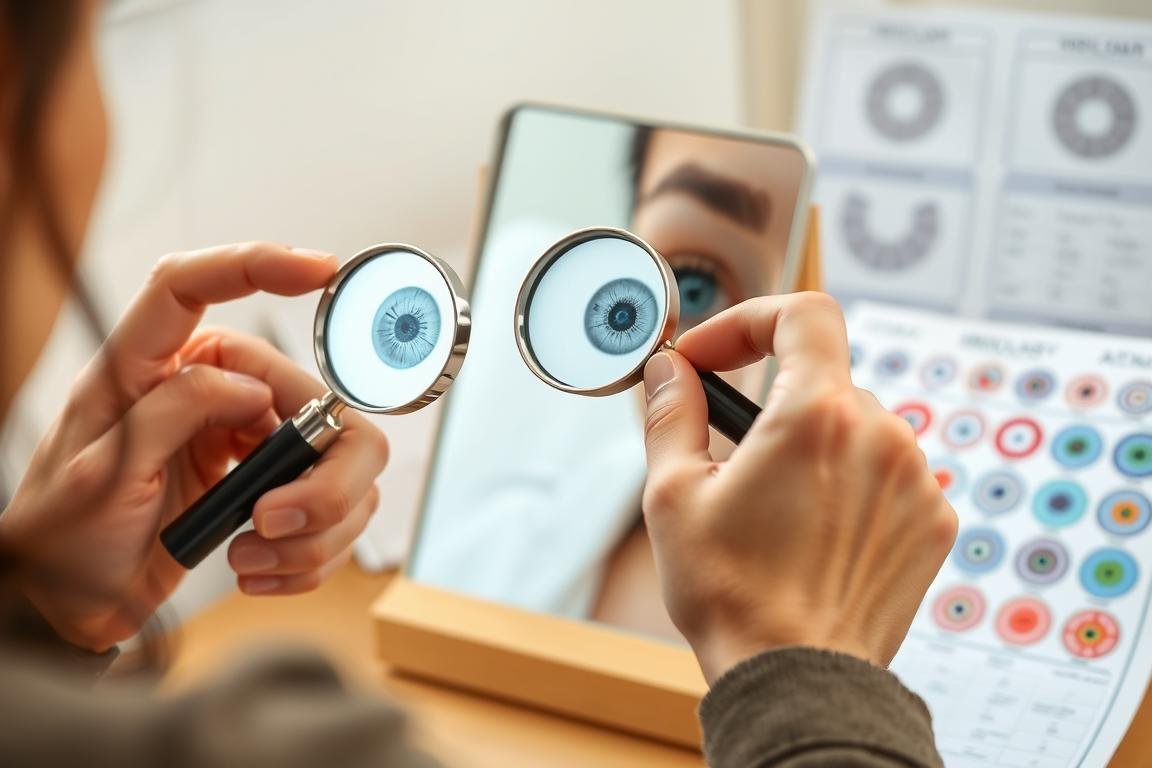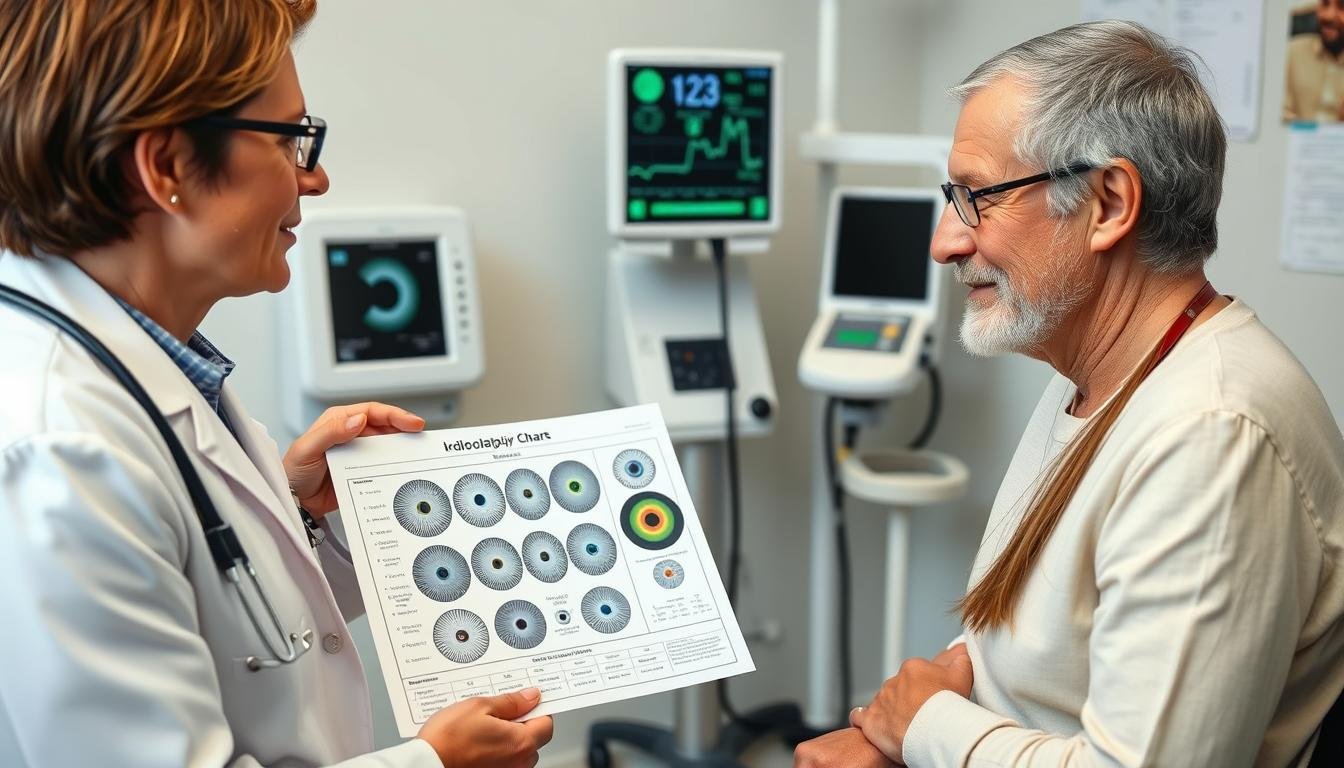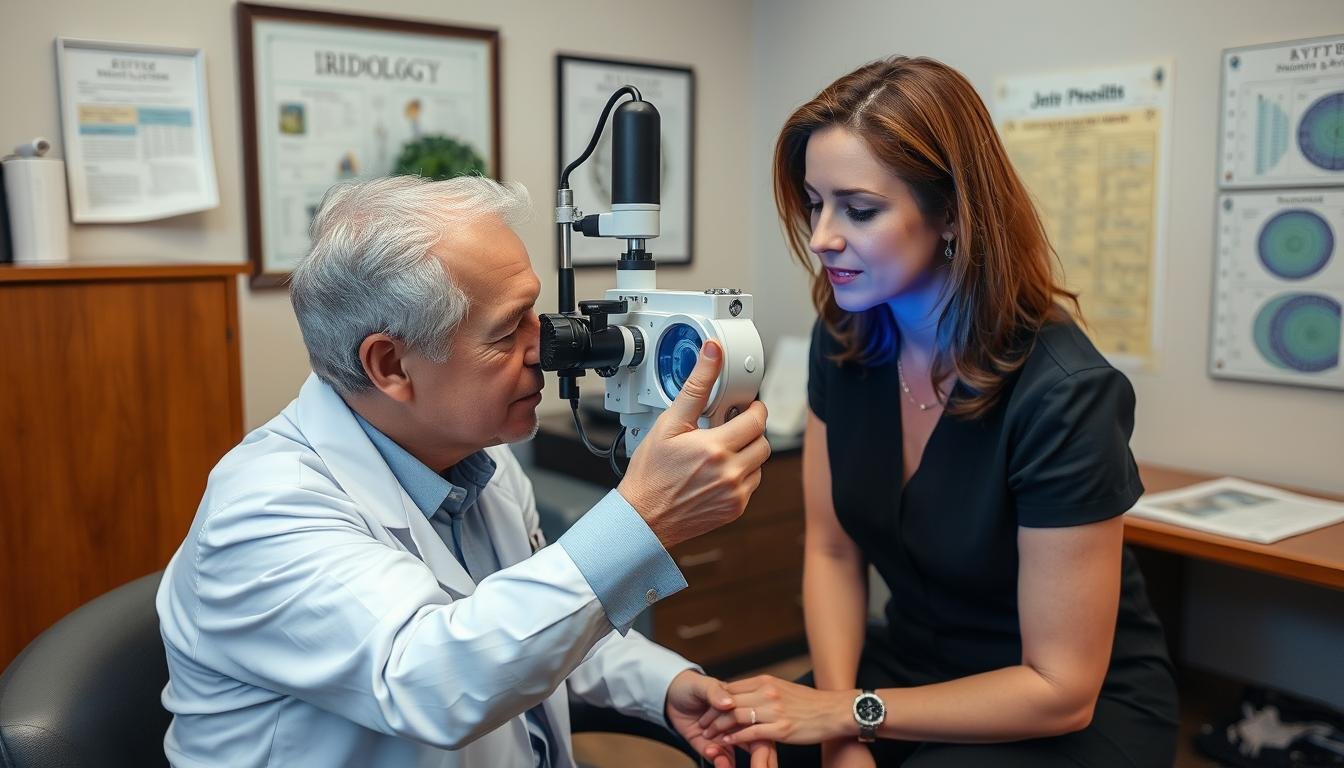The eyes may truly be windows to your health—especially your heart health. For centuries, practitioners of alternative medicine have studied the intricate patterns of the iris to gain insights into the body’s condition. An diagramă de iridologie specifically designed for cardiovascular assessment can reveal subtle signs of heart issues before they manifest as symptoms. This ancient practice, when combined with modern understanding, offers a unique perspective on preventive heart care that many find valuable as part of their holistic health approach.In this comprehensive guide, we’ll explore how the colored part of your eye might hold clues to your cardiovascular wellbeing, what specific markers to look for, and how to interpret these findings as part of your heart health journey.
Ce este un Diagrama de iridologie?



A standard diagramă de iridologie mapping iris zones to body systems
Un diagramă de iridologie is a detailed map that divides the iris—the colored part of your eye—into zones corresponding to different organs and systems in the body. This diagnostic tool has roots in ancient healing traditions but was formalized in the 19th century. Modern charts typically feature concentric circles and radial divisions that create a comprehensive map of the body’s organs and systems.
For cardiovascular health specifically, certain zones of the iris are believed to correspond to the heart, blood vessels, and circulation system. These areas, when examined by a trained practitioner, may reveal signs of stress, inflammation, or potential issues affecting heart function.
The Science Behind Diagrama de iridologie Analiză
While conventional medicine remains skeptical about iridology, proponents point to the iris’s unique connection to the nervous system. The iris contains thousands of nerve endings connected to the brain via the optic nerve. This neurological highway potentially allows the iris to reflect changes occurring throughout the body.
Some research suggests that changes in iris structure might correlate with certain health conditions, though more rigorous studies are needed. The practice of iridology relies on careful observation of:
- Color variations within specific zones
- Caracteristici structurale precum inele, pete și linii
- Texture changes and fiber patterns
- Pigmentation and discoloration
For cardiovascular assessment, practitioners pay particular attention to the heart zone, typically located in the left iris between 2 and 3 o’clock positions (when viewed as a clock face).
Cum Diagrama de iridologie Relates to Cardiovascular Health
According to iridology practitioners, the cardiovascular system has specific representation in the iris. The heart itself is typically mapped to a small but significant area in both irises, with the left iris often showing more detailed information about the heart’s condition.
Cardiovascular health is not isolated—it connects to many body systems. This interconnectedness is reflected in the diagramă de iridologie, where the heart zone relates to adjacent areas representing the lungs, thyroid, and adrenal glands—all of which influence heart function.
Download Our Complete Cardiovascular Iridology Guide
Get our detailed guide with high-resolution charts, interpretation keys, and step-by-step analysis techniques for monitoring your heart health through iridology.
Descărcați ghid gratuit
Key Markers in an Diagrama de iridologie for Heart Health
When examining an diagramă de iridologie for cardiovascular health, several key markers deserve attention:
Color Indicators
- White or yellowish ring around the iris (known as arcus senilis) – may indicate high cholesterol levels
- Puncte întunecate in the heart area – potentially signaling tissue damage or inflammation
- Reddish discoloration – often associated with inflammation or increased blood pressure
Semne structurale
- Radial furrows extending from the pupil through the heart zone – may suggest stress affecting the heart
- Lacune (enclosed darker areas) – potentially indicating weakened tissue or chronic issues
- Nerve rings (circular lines) crossing the heart zone – often linked to nervous tension affecting cardiovascular function
Interpreting Color and Patterns in Your Diagrama de iridologie
Interpretation of iris signs requires understanding both the location and the nature of the markings. Here’s how practitioners typically interpret common patterns:
| Iris Pattern | Locaţie | Potential Cardiovascular Indication |
| Sodium Ring (white ring) | Outer iris | Possible elevated cholesterol, arterial plaque |
| Brazde radiale | Heart zone (2-3 o’clock left iris) | Stress affecting heart function |
| Dark Lacunae | Heart zone | Potential tissue weakness or chronic issues |
| Rozariu limfatic | Outer iris border | Lymphatic congestion affecting circulation |
| Inele nervoase | Crossing heart zone | Nervous tension affecting heart rhythm |
| Orange/Brown Pigmentation | Heart zone | Possible toxic accumulation affecting heart |
Remember that these interpretations are based on traditional iridology principles and should be considered alongside conventional medical assessments for a comprehensive health picture.
Using an Diagrama de iridologie for Preventive Care
The greatest value of iridology may lie in its potential for early detection and preventive care. By regularly monitoring changes in your iris patterns, particularly in the cardiovascular zones, you might identify potential issues before they manifest as symptoms.
Here’s how to incorporate diagramă de iridologie analysis into your preventive heart health routine:
Self-Monitoring
Learn to identify basic iris signs using a magnifying mirror and reference chart. Take periodic photos of your irises to track changes over time.
Professional Consultation
Schedule regular sessions with a qualified iridologist who specializes in cardiovascular health for more detailed analysis.
Integrated Approach
Use iridology insights alongside conventional medical check-ups, lifestyle improvements, and other holistic practices.
Studii de caz: Diagrama de iridologie Povești de succes
“After noticing a concerning pattern in my iris’s heart zone during a routine iridology session, I made significant dietary and lifestyle changes. Six months later, not only had the iris signs improved, but my conventional cardiac tests showed measurable improvements in blood pressure and cholesterol levels.”
– Michael R., 58, Cardiovascular Iridology Patient
While individual experiences vary, many practitioners report cases where iris changes preceded measurable improvements in cardiovascular health markers. These anecdotal successes highlight the potential complementary role of iridology in a comprehensive heart health program.
Schedule a Cardiovascular Iridology Assessment
Our certified iridologists specialize in heart health analysis and can help you understand what your iris reveals about your cardiovascular system.
Book Your Session
Limitations of Diagrama de iridologie Analiză
While iridology offers interesting insights, it’s important to acknowledge its limitations, particularly for cardiovascular assessment:
Strengths of Iridology
- Non-invasive observation method
- May detect subtle changes before symptoms appear
- Considers whole-body connections to heart health
- Encourages preventive health awareness
- Complements other holistic health practices
Limitations of Iridology
- Limited scientific validation in clinical studies
- Cannot diagnose specific heart conditions
- Interpretarea practicantului variază semnificativ
- Not a replacement for medical cardiac testing
- May miss acute or rapidly developing conditions
The scientific community generally considers iridology to have insufficient evidence as a standalone diagnostic method. Therefore, it’s best used as a complementary approach alongside conventional medical care, particularly for serious conditions like heart disease.
Important: Iridology should never replace conventional medical diagnosis and treatment for cardiovascular conditions. Always consult with a qualified healthcare provider for any heart-related concerns.
Întrebări frecvente despre Diagrama de iridologie and Heart Health

How accurate is iridology for detecting heart problems?
Iridology is not considered scientifically validated for diagnosing specific heart conditions. While some practitioners report success in identifying general cardiovascular stress patterns, it should be used as a complementary tool alongside conventional medical testing, not as a replacement for proper cardiac diagnosis.
Can iridology detect heart attacks before they happen?
There is no scientific evidence that iridology can predict acute cardiac events like heart attacks. While some practitioners claim to observe patterns of chronic stress that might contribute to heart disease risk, immediate cardiac concerns should always be addressed through conventional medical channels.
How often should I have my iris examined for heart health?
For those interested in iridology as a complementary practice, most practitioners recommend annual examinations for general monitoring, or semi-annual checks for those with existing cardiovascular concerns. However, follow your conventional medical provider’s recommendations for standard cardiac check-ups regardless of iridology practices.
Can I learn to read my own iris for heart health signs?
While basic self-examination is possible with a good magnifying mirror and reference materials, accurate interpretation requires significant training. Self-monitoring can be a helpful awareness practice, but professional consultation is recommended for meaningful analysis, especially for cardiovascular concerns.
Do iris patterns change after heart treatment or surgery?
Some iridologists report observing changes in iris patterns following significant health interventions or lifestyle improvements. However, these changes typically develop gradually over months or years rather than immediately after treatment. Scientific studies confirming these observations are limited.
Embracing a Holistic Approach to Heart Health
The diagramă de iridologie offers a unique window into potential cardiovascular health patterns that might otherwise go unnoticed. While it shouldn’t replace conventional medical care, many find value in this complementary approach to heart health awareness.
By understanding the basic principles of iris analysis for cardiovascular health, you can add another dimension to your heart health journey—one that encourages prevention, early awareness, and a holistic perspective on wellbeing.
Whether you’re exploring iridology out of curiosity or seeking to expand your preventive health toolkit, remember that the most effective approach to heart health combines multiple strategies: conventional medical care, appropriate lifestyle choices, stress management, and possibly complementary practices like iridology.
Start Your Cardiovascular Iridology Journey Today
Download our comprehensive guide and connect with certified practitioners who can help you understand what your iris reveals about your heart health.
Get Your Free Guide



